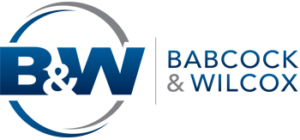Tesla’s push toward sourcing batteries without relying on China could reshape the U.S. auto and energy industries. Piper Sandler highlights Tesla as the only major U.S. automaker with a clear plan to achieve near-zero China dependence—thanks to its vertical integration, novel manufacturing processes, and domestic material sourcing.
Why Battery Independence Matters
China controls roughly 80% of global lithium-ion cell manufacturing and an even larger share of key materials like lithium hydroxide and cathode active materials (CAM). This concentration creates three major risks for automakers:
-
Geopolitical exposure: Trade tensions or export restrictions could throttle battery supply.
-
Cost volatility: China-based processing plants often set the benchmark for raw‐material pricing.
-
Innovation constraints: Relying on foreign partners can slow down proprietary cell development.
With “China reliance approaching 0%” for its 4680 cells, Tesla is positioning itself to sidestep these risks. Other U.S. automakers continue to depend on Chinese suppliers for CAM and cell assembly, whereas Tesla’s roadmap aims to internalize each link in the battery value chain.
Vertical Integration: From Raw Ore to Cell Assembly
Tesla’s strategy centers on owning or controlling every step of battery production:
-
Lithium Refining
Tesla is piloting novel processes to convert spodumene ore into battery-grade lithium carbonate and hydroxide. Even if these methods don’t fully scale, Tesla gains the flexibility to negotiate better terms with third-party suppliers. -
Cathode Active Materials (CAM)
In-house production of high-nickel NCA and iron-phosphate (LFP) cathodes reduces dependence on Chinese firms like CATL or Gotion High-Tech. By manufacturing CAM domestically, Tesla can lock in cleaner cost curves and faster technology upgrades. -
Dry Battery Electrode (DBE)
Traditional “wet” electrode coating uses solvents and requires long drying times. Tesla’s DBE process eliminates solvents entirely, making electrode production roughly 5×–6× faster than wet methods. This could translate into significant capital and operating cost savings—fewer drying ovens, lower energy consumption, and reduced environmental controls. -
Cell Assembly and Gigafactories
With Gigafactories in Texas and Nevada, Tesla already assembles cells into modules and packs. As vertical integration deepens, entirely China-independent 4680 stacks may roll off U.S. production lines, further insulating Tesla from overseas disruptions.
Monitoring Lithium Costs with the Commodities API
Tesla’s refining economics hinge on lithium pricing. By leveraging the Commodities API, analysts can track real-time prices for lithium carbonate and hydroxide. For example, when lithium prices spiked 50% in late 2023, Tesla’s own refining pilot could help cushion cost increases by comparing internal production costs against global benchmarks.
Dry Battery Electrode (DBE): A Potential Game Changer
The DBE process stands out for its potential to accelerate cell production and lower costs:
-
Speed: Without a solvent-based coating, electrodes can bypass lengthy drying ovens, increasing throughput by more than 80%.
-
CapEx Savings: Fewer drying lines and solvent-recovery systems reduce upfront equipment costs.
-
OpEx Savings: Eliminating volatile organic compounds (VOCs) lowers regulatory compliance burdens and energy consumption.
-
Scalability: Piper Sandler expects DBE to begin scaling by late 2025—though uncertainties remain around achieving full-scale capacity.
Competitors that still rely on wet processes—often through joint ventures with Chinese partners—won’t match Tesla’s projected cost curve until they invest in or license comparable dry-coating technologies.
Building Domestic LFP Capacity
Tesla’s focus on iron-phosphate (LFP) chemistry further reduces China exposure:
-
Eliminates Cobalt and Nickel: LFP cells sidestep expensive or geopolitically sensitive metals, trading slightly lower energy density for cost stability and safety.
-
10 GWh U.S. LFP Target: Piper Sandler reports Tesla is commissioning around 10 GWh of domestic LFP capacity—approximately 25% of the 40 GWh needed for U.S. Megapack production.
-
Megapack and Beyond: LFP’s stability and lower material costs make it ideal for grid storage (Megapack) and standard-range EVs. As Tesla ramps LFP capacity stateside, exposure to Chinese LFP suppliers diminishes.
Implications for Investors and U.S. Supply-Chain Resilience
Tesla’s China-free battery roadmap carries several strategic implications:
-
Supply-Chain Resilience: A self-sufficient value chain—from lithium refining to cell assembly—blunts risks from tariffs, export controls, and global bottlenecks.
-
Investor Confidence: As supply-chain risk shrinks, Tesla’s forward multiples and ESG profile could improve. Tracking TSLA’s evolving metrics via the Company Rating API helps investors see how operational advances translate into financial performance.
-
Competitive Gap: Legacy automakers like Ford and GM are investing in cell manufacturing—often in partnerships with Chinese CAM suppliers. Tesla’s head start could deliver a 12–18-month cost-curve advantage before rivals catch up.
-
Risk Factors:
-
Scaling lithium-refining processes to commercial volumes remains unproven.
-
DBE at gigawatt-hour scale could face engineering hurdles and delays.
-
Lithium feedstock constraints or price volatility may pressure margins until internal refining is fully operational.
-
Next Steps for Stakeholders
-
Stay Informed on Lithium Trends: Use the Commodities API to monitor lithium price fluctuations and compare them against Tesla’s internal cost projections.
-
Monitor Tesla’s Financial Health: The Company Rating API can provide updated risk scores, ESG rankings, and fundamental metrics to gauge how Tesla’s supply-chain progress impacts valuation and analyst sentiment.
-
Benchmark Competitor Plans: Watch legacy automakers’ joint ventures and R&D announcements to see if—and when—they can reduce China dependence.
By pursuing a vertically integrated, China-independent battery supply chain, Tesla is setting a new standard for resilience and cost competitiveness. Even if some domestic refining experiments fall short, the company’s integrated blueprint ensures it remains better positioned than rivals that continue to rely heavily on Chinese suppliers.




